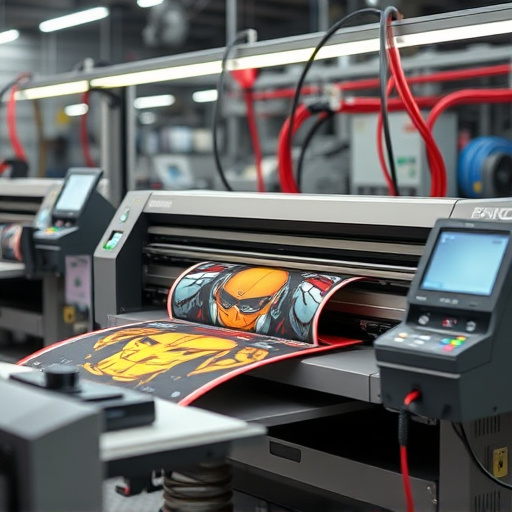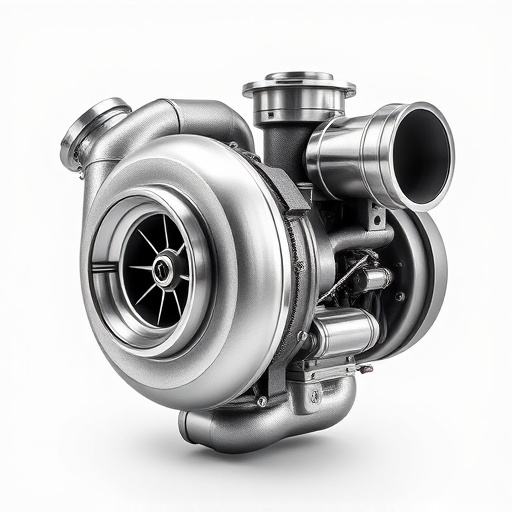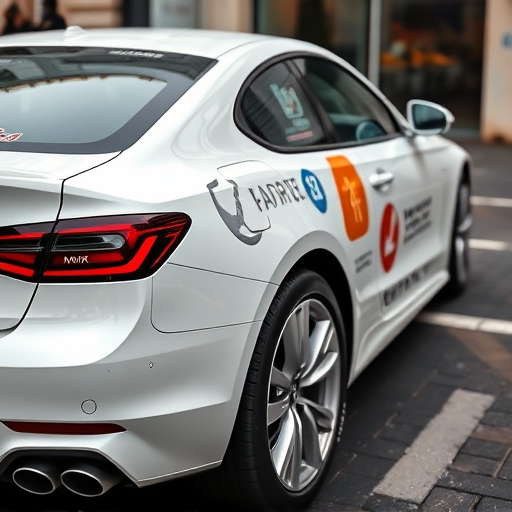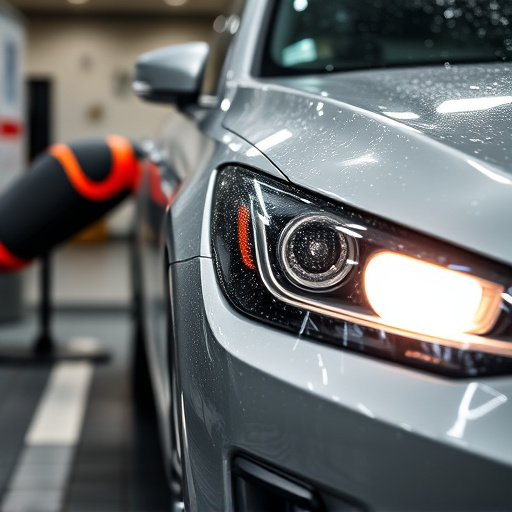Vehicle decal installation requires meticulous preparation, precise application, and protective finishing for professional results. The process involves cleaning surfaces, carefully applying decals, and adding top coats. Duration varies based on size, complexity, preparation, installer experience, environmental conditions, and number of decals. Professional shops optimize stages, techniques, and work for swift turnarounds without compromising quality, catering to customers seeking quick vehicle enhancements.
Curious about how long it takes to transform your vehicle with a new decal? This guide breaks down everything you need to know about the installation process. From understanding the step-by-step application to identifying time-influencing factors, we’ll walk you through what to expect. Learn how professionals optimize efficiency for quick turnarounds and discover tips to expedite your own vehicle decal installation.
- Understanding the Decal Application Process
- Factors Affecting Installation Time
- Optimizing Efficiency for Quick Turnarounds
Understanding the Decal Application Process

The process of installing a vehicle decal is an art that involves several precise steps to ensure a professional finish. It begins with thorough preparation of the car’s surface, which includes cleaning and decontaminating to achieve optimal adhesion. This crucial initial stage ensures that the decal adheres firmly and lasts for its intended duration.
Next, experts carefully apply the decal, using air bubbles and excess material as guides. The application process requires skill to avoid wrinkles or misalignments. Once in place, a top coat is often applied to protect the decal, enhancing its durability and providing an extra layer of vehicle protection. This step is especially important for custom vehicle wraps, where the design might include intricate details that require meticulous care during installation. Professional PPF (Paint Protection Film) installation also falls under this process, offering an added shield against road debris and the elements.
Factors Affecting Installation Time

The duration of vehicle decal installation can vary significantly based on several factors. One of the primary influences is the size and complexity of the decal itself. Larger or more intricate designs, especially those featuring custom graphics, may take considerably longer to apply accurately due to the detail work involved. The level of preparation also plays a crucial role; tasks such as paint correction and window tinting, which are often part of the initial setup, can extend the installation time.
Additionally, the installer’s experience matters; seasoned professionals with expertise in custom graphics can usually complete installations faster than beginners. Environmental conditions, like temperature and humidity, can also affect timing as they may impact the adhesive properties and drying times of the decal material. Lastly, the number of decals being installed—whether on one vehicle or multiple ones—will directly correlate to the overall installation time.
Optimizing Efficiency for Quick Turnarounds

To ensure a swift vehicle decal installation, many professional detailing shops optimize their processes for efficiency. This includes streamlining the preparation stages, such as cleaning and decontaminating the car’s surface to achieve the best adhesion for the decals. Skilled technicians also work methodically, carefully cutting and applying the vinyl wraps or ceramic coatings with precision, minimizing unnecessary movements.
This optimized approach allows for quick turnarounds without compromising on quality. In fact, many premium automotive services offer fast turnaround times as a selling point, appealing to customers who need their vehicles ready in a hurry. Whether it’s a simple graphic design or a complex wrap job, efficient techniques mean clients can enjoy their freshly adorned vehicles sooner.
Vehicle decal installation time can vary, but by understanding the process and optimizing efficiency, many professionals can complete installations promptly. Key factors such as decal size, complexity of design, surface preparation, and application techniques significantly impact duration. For quick turnarounds, consider employing streamlined methods, experienced applicators, and suitable equipment to ensure efficient vehicle decal installation without compromising quality.














